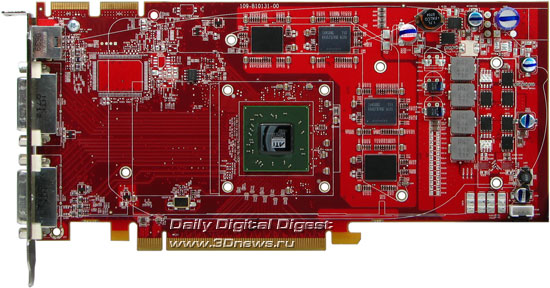Choosing among HD2600XT with DDR3, DDR4, or 8600GT? Or 7900GS, X1950Pro? Tests in the No AA/AF mode

Author:
Date: 08.08.2007 |
|
Recently, we introduced Sapphire HD2600 Pro and found out how it works in terms of performance when tuned to high quality settings with the full-screen antialiasing enabled. Needless to say, such a heavy load produces a dramatic effect upon the performance of middle-end video cards equipped with a 128-bit wide memory bus. We can expect that in "lighter" modes where the requirements to video memory bandwidth are not so critical the results for HD2600XT and 8600GT may prove much better. Moreover, we'll be comparing performance of the above mentioned video cards versus representatives of the previous generation (X1950Pro ? 7900GS) which are currently occupying the same price niche but offer a 256-bit wide memory bus. According to the findings in 256-bit memory bus in middle-end video cards: is it really necessary? Theory and practice, in the modes without full-screen antialiasing video cards of 128-bit memory bus width demonstrate quite a minor lag behind their 256-bit analogs. Today, we'll find out of this assertion holds true for middle-end video cards of different generations. And of course we'll try to find out the difference in performance for two versions of Radeon HD2600XT equipped with GDDR3 and GDDR4 memory.
By tradition, we'll be examining the exterior and features of the video cards which took part in the tests and then move on to the benchmarking part.
AMD Radeon HD2600XT GDDR4
As the name suggests, we have a specimen of the reference AMD Radeon HD2600XT video card equipped with GDDR4 memory. The video card is of quite impressive size and is equipped with quite a formidable cooler of "proprietary" red color. The video card is equipped with two DVI/Dual-Link outputs, one HDTV/S-Video-out, and occupies one standard PCI slot. There was no package for the given specimen (which is understandable), but the card comes bundled with a DVI/HDMI adapter.
This adapter is quite useful. Using it, we can directly connect any device equipped with a HDMI port "digitally' to the computer, provided there is a DVI output on the video card. Therefore, we can avoid an excessive pair of digital-analog/analog-digital conversions and essentially improve the quality of the resultant picture. That is especially topical for high-resolution panels (for example, with support for HDTV). Of course, video cards not belonging to the AMD Radeon HD2xxx series will not be able transmitting the audio part together with the image to the receiving multimedia device, but that is not so critical since digital home cinemas use standalone speakers or surround systems.

Under the cooler, there is a video processor and four video memory chips. The video card's power supply subsystem has been made with all solemnity, despite the relatively low power consumption of the RV630XT chip manufactured following the 65 nm process technology. There is also space for a Rage Theatre video capture chip, although the chip itself is not unsoldered.
On the reverse side, there is space for additional video memory chips, so the emergence of HD2600XT versions with doubled video memory capacity is at hand.
The cooler is built following the traditional scheme - an aluminum foot which cools the memory chips and power components of the power supply system via thermal spacers, with a copper core in the center and fins soldered onto to cool the GPU directly. The turbine is of modest size, but it does its job quite well and runs almost noiselessly.
As you can see, in the 2D mode the GPU temperature is at about 60°, and in the 3D mode under load the temperature of the video processor stays at about 70° C.
As was expected, the video processor on the reference specimen runs at the recommended 800 MHz.
The overall capacity of the onboard video memory is 256 MB. Used are Samsung GDDR4 chips of 512 Mbit density and 0.9 ns access time, which is equivalent to the nominal frequency 1100 MHz (2200 MHz DDR). This is the nominal frequency the video memory runs.
 |
Content: |
 |
|
 |
Top Stories: |
 |
 |
 |
MoBo:


|
 |
 |
 |
VGA Card:


|
 |
 |
 |
CPU & Memory:

|
|
|
